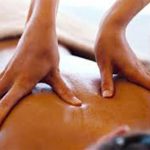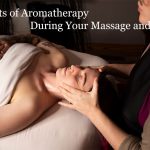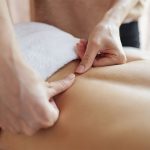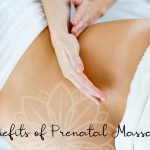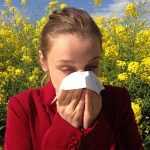Allergy Basics
According to the American Academy of Allergy, Asthmas, and Immunology, allergies affect more than 50 million Americans, making it the country’s fifth most chronic disease, third among children.
We spend around 7.9 billion dollars a year on treatment—about 4.5 million on direct care and 3.4 billion on indirect care, including lost work.
Allergies are, in the simplest sense, the body overachieving. “Your immune system is reacting to things it shouldn’t be reacting to,” says Leonard Bielory, MD, director of the Asthma & Allergy Research Center at New Jersey Medical School. “Your body goes on high alert against normally innocuous substances, like cat hair, pollen, or peanuts.”
In this reaction, the body’s mast cells, which are loaded with chemical-like histamines and other granules, break open and release these substances, which in turn hurt the body. The result can be everything from life-threatening anaphylactic shock to the more benign runny nose, foggy thinking, and low-grade chronic cough. Of course, you can suffer in many other ways as well, including gas and bloating, eczema, sinusitis, earaches, headaches, and even joint pain, migraines, and depression.
Relaxing the Symptoms
Many Americans rely primarily on conventional treatments, including antihistamines and steroids, both of which can have some adverse side effects. Massage therapists, however, can help relieve some allergy symptoms by reducing stress, increasing circulation, releasing muscle tension, and reprogramming the body’s panic reaction, which can exacerbate symptoms.
“It’s not to take away from the biological, inflammatory component of the disorder,” says Rosalind Wright, MD, a pulmonist on staff at the Harvard Medical School. “But if you use complementary modalities, including massage therapy, you could optimize the results.”
Few studies researching massage therapy and allergy relief exist, but we do know massage helps with stress, as shown in the 1992 Touch Research Institute study where 30-minute body massages on depressed adolescents decreased saliva cortisol levels.
And stress definitely impacts allergies. A 2008 Harvard Medical School study co-authored by Wright showed that mothers-to-be who expose their unborn children to stress may increase these kids’ vulnerability to allergies and asthma.
Wright says that these stressors act like “social pollutants” breathed through the body, influencing the body’s immune response. “Just as you can breathe in an allergen like dust mites or ragweed, you can breathe in stress,” she says. “You take it into your body and it operates in similar types of pathways.”
So just getting clients to relax may help their allergies. “Most experienced massage therapists know the immediate relief from sinus congestion that can result from just lying face down,” Lies says. This position gives you a chance to work on the upper back and shoulders, where many sinus trigger points are located.
Getting More Specific
Roy Desjarlais, a massage and craniosacral therapist, and vice president of clinical services at the Upledger Institute says that calming the muscles around the clavicle and neck area is also helpful in mitigating the fight-or-flight response brought on by allergies, along with its concomitant symptoms, such as hiking the shoulders, holding the breath and tightening the throat. “Anything that works with upper chest and neck will … engage an area relating to the reticular alarm system, which is the system in our autonomic nervous system that responds to fear and anxiety,” he says.
Specifically, Desjarlais recommends working the sternoclemastoid muscle, pectoralis major and minor, the subclavius, and all the posterior neck muscles going into the occipital muscle. You choose the type of strokes, he says, as long as they’re calming. “This is where the art of massage comes in,” he adds.
Desjarlais also recommends referring to a simple reflexology chart to activate the trigger points on the feet for the thymus gland, the master gland for the immune system, and the pituitary gland, the master gland for the endocrine system.
The head offers its own relief, too.
“When muscles tighten up around the head, it restricts blood flow and closes up sinuses,” says Lies. A simple head massage can help loosen these muscles.
Another technique that can help allergies is lymphatic massage, which can help reduce inflammation, remove toxins and support the immune system. “The lymph system is the system best suited to move those accumulated protein molecules and other wastes out of the area,” says Roger Hughes, a therapist and certified Dr. Vodder Method of Manual Lymph Drainage practitioner.
He’s had successes over the years working with long-time allergy sufferers, including children with food allergies who also have frequent ear infections. In the Vodder method, the strokes are light. “Forty percent of the lymphatic system is right under the skin,” Hughes explains. “Therefore, light, pleasurable, rhythmic touch is the mainstay of the Vodder method.”
Also, one-third of the lymph nodes are in the neck. Hughes begins his sessions there, where he says he’s “opening the lymph faucet.” Although Hughes encourages therapists to honor the practice of referring to certified practitioners of lymph drainage for expert treatment, “working with mindfulness, presence, and intention is more powerful than people realize,” he says. “You’re helping that person let go of himself, and let go of unconscious tension. This, in turn, will let all the fluids in the body—the blood, lymph, and nerves—flow more easily.”
Desjarlais agrees and says setting an intention is a practice like meditation—to continually bring yourself back to the issue at hand. It’s a practice he brings to his work in craniosacral therapy, an osteopathic discipline that uses specific techniques to move the cerebral spinal fluid and to calm the nervous system.
Other craniosacral techniques impact the immune system through the endocrine glands and increase overall fluid exchange, all very helpful in allergy relief. Craniosacral therapy also helps to change some deeply patterned responses.
“Sometimes the reason we react to an allergen is habitual—we get grooved neurologically and physiologically, and sometimes when we break these groove reaction cycles, the body doesn’t react to the allergens anymore,” says Desjarlais.
This happened to Desjarlais himself, who had a longtime allergy to shellfish that caused his throat to swell and his stomach to cramp.
Now, he can eat shellfish with only a mild scratchy throat afterward.
Part of the beauty of craniosacral work is that even taking beginning courses can allow you to incorporate some of the techniques into your practice. “Anyone can apply it to their own work,” says Desjarlais.
Massage and allergies can go quite well together!
Massage therapy may help the body in many ways. Massage can relax muscle tissue, which may lead to decreased nerve compression, increased joint space, and range of motion. This may lead to reduced pain and improved function.

